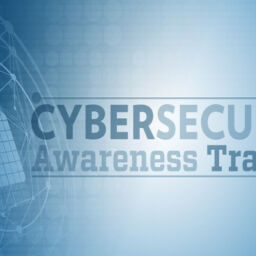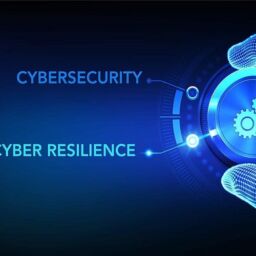
Digital technology is becoming an increasingly essential part of nearly every industry, and supply chains are no exception. In recent years, supply chains have become more dependent on digital solutions, from manufacturing, packing, and shipping processes, to storing records in the cloud.
While digital technology increases speed, efficiency, and interconnectivity across industries, this increased complexity can also lead to higher gaps in cybersecurity. As more digital data is transferred through a company, the potential for cybersecurity weaknesses increases.
Supply chains are not immune to this increase in cybersecurity threats. Malicious actors can gain access to valuable and highly sensitive information. For every link in the supply chain, it is vital to be able to protect yourself against cybersecurity threats.
The Four Largest Cybersecurity Threats to Your Supply Chain
Cyberattacks come in various forms and can occur due to unexpected internal weaknesses in a company. Employees who fall for a convincing impersonation may be tricked into sharing access codes and login information with an attacker. Routine cyberattacks can bypass cybersecurity controls via compromised devices, weak passwords, and limited security measures surrounding sensitive data.
Data theft is only one type of cyber threat. To gain a deeper understanding of how your supply chain may be at risk of cyberattacks, let’s look at four specific types of attacks on supply chains that you should be aware of.
1. Digital Transformation Risks
As more supply chain networks incorporate digital solutions and undergo dramatic digital transformation, more digital vulnerabilities appear. These digital risks can be caused by flaws in the software, configuration errors that made it through security checkpoints, or human error.
Digital risks can quickly evolve to become potent supply chain dangers such as malware and ransomware attacks, breaches in data security, and regulatory compliance violations. These attacks can lead to further consequences, including disrupted supply chain processes, theft of intellectual property, and exposed data.
2. Third Party Vendors
While you may trust the third-party vendors you work with, their cybersecurity measures must align with yours, or it may present a risk to your company, especially regarding data security.
3. Data Availability
Data is located throughout the various stages of each supply chain, making this a potential goldmine for cybercriminals.
4. Third-Party Fraud
This type of cyberattack, known as vendor or supplier fraud, occurs when a bad actor impersonates a well-known retailer, someone you will be familiar with. The cybercriminal then requests you to change the usual payment process, introducing a new bank account or other details.
Third-party vendors can also become risk components in this type of attack. New advancements in digital technology, including phishing attacks utilizing ChatGPT, deep fake video clips, and digitally created audio recordings, can make for convincing attempts at fraud that are difficult to disprove.

How To Protect Your Supply Chain From Cyberattacks
The best way to preempt a cyberattack is to reduce the risks before the attack occurs. Implement a robust security strategy that will make it difficult for even the most determined hacker to gain access to your supply chain networks and data. Let’s look at a few key elements to help prevent bad actors from enacting successful cyberattacks.
Incident Response Planning
In the event of a successful cyber breach, the last thing you will want is widespread panic and uncertainty about how to proceed. Instead, you should have a clear plan carefully set out well in advance of any unfortunate incident.
Each employee should understand their role in carrying out this security response plan, including actions to mitigate the potential damage, who they should contact, and who they report to in the chain of command. In addition, security analysts and IT teams should test whether or not the security system response plan you have in place is effective.
Data Encryption
If data is not encrypted at every stage of its lifecycle, attackers may be able to access sensitive information throughout your supply chain. All data stored within your supply chain networks and servers should be encrypted. That way, even if a bad actor can successfully compromise your system, they will not be able to decrypt information stored there. This is especially true of third-party integrated software and applications, as they offer more potential entry points for cyberattacks. As you review your supply chain’s data encryption, you should follow industry-recognized encryption methods, such as those offered by authoritative sources.
Practice the Need to Know Principle
Just as your employees are limited in their ability to access information that is not relevant to their job function, give your third-party vendors the least amount of access to perform the task at hand.
Assess the Risk
Take the time to perform an initial security analysis and risk assessment of your third-party exposure. This can help to reveal the potential weak spots.
Taking the proactive measure to determine where your supply chain security risks lie will allow you to modify procedures and patch security gaps before cybercriminals exploit them.
Cybersecurity Training
Uninformed employees present a serious weak spot in any organization’s cybersecurity strategy. Ensure that every employee is aware of the potential risks that cyberattacks present. Include adequate information about phishing strategies, regular cybersecurity maintenance (such as frequent computer, app, and software updates on all devices), and good password hygiene.
Educating employees on what to watch out for and where to report potential threats and suspicious activity reduces the likelihood of success for certain types of cyberattacks, such as phishing and identity theft.
Final Thoughts
By putting ample cybersecurity measures in place, you can protect your supply chain from breaches before they occur. Encrypt your data, and prepare a robust security response plan in the event that something does go wrong. Be aware of prevalent cyberattack tactics such as digital risks, third-party vendor risks, supplier fraud, and data integrity. A better understanding of the risks allows you to understand the importance of being prepared to face cybercriminals well in advance.
Source: www.tripwire.com
















